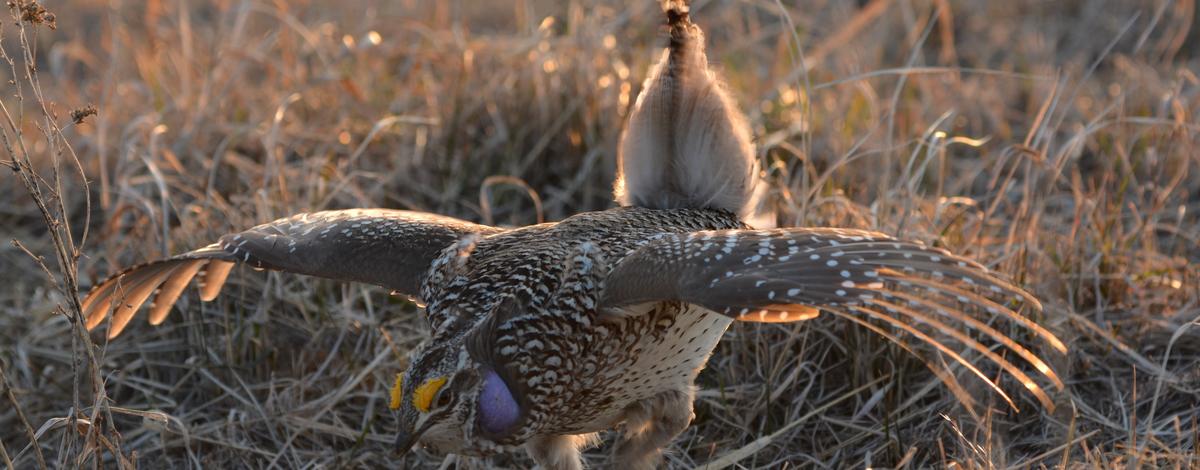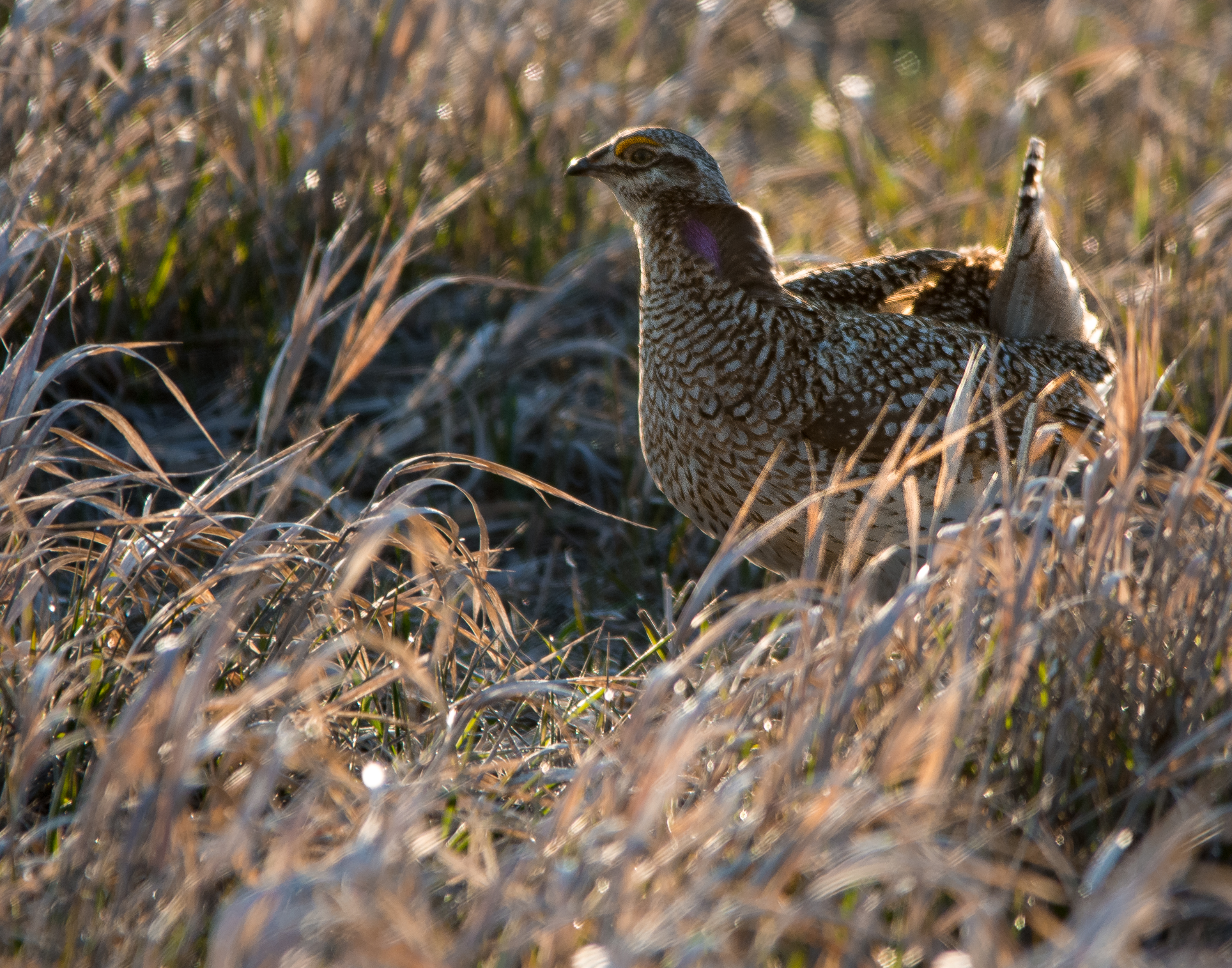Anyone who’s ever taken a drive along Idaho Highway 95 knows what sagebrush country looks like. It’s yellowish-brown, spans as far as the eye can see, and often appears completely void of life upon first glance. But have another look—pull out the binos if you need them—and after a while, a whole other world of fauna comes to life amidst the grasslands.
For Idaho Fish and Game biologists in southwest Idaho, there’s one particular upland game bird species of note, hiding in plain sight within the bunchgrass. Every spring, they show off their best dance moves to hopefully attract a mate. The spectacle, one of the most unique performances put on by the animal kingdom, signifies the first chapter of the Columbian sharp-tailed grouse’s story.



